We explain everything about Bolivia, what its history is like, and the national symbols of this country. Also, what are its features and more?
What is Bolivia?
Bolivia, officially known as the Plurinational State of Bolivia, is a sovereign country of South America located in the central region of the subcontinent, bordering to the north and east with Brazil , to the south with Argentina and Paraguay , and to the west with Chile and Peru , since it has no outlet to the sea.
Bolivia has a land area of 1,098,581 km 2 , the sixth largest in Latin America and one of the most biodiverse on the entire planet. Important pre-Columbian cultures such as the Tiwanaku or the Moxeña culture originated in this region , and later it was dominated by the Inca Empire , before being in turn subdued by the Spanish in the 15th century.
Bolivia is currently considered a developing country , with significant economic and social challenges, although in recent times it has shown sustained economic growth. It is a member country of Unasur, Mercosur , OEA, ALBA and the IMF. It is considered one of the three safest countries in Latin America .
Capital of Bolivia

According to what is established in the Bolivian Constitution, the capital of the nation is the city of Sucre , originally called Chuquisaca or La Plata by the Spanish conquerors, but renamed in 1825 in honor of the Great Marshal of Ayacucho, the Venezuelan Antonio José de Sucre , the country's first president and organizer of its republican constitutional system. It is a city of around 300,000 inhabitants, located in the southern region of the country.
However, the city of La Paz is the true seat of the State , its political, cultural, and financial epicenter, where the public powers (except for the judiciary) and more than 700,000 inhabitants reside. Located about 3,650 meters above sea level , in western Bolivia, it is the highest metropolis in the world.
History of Bolivia
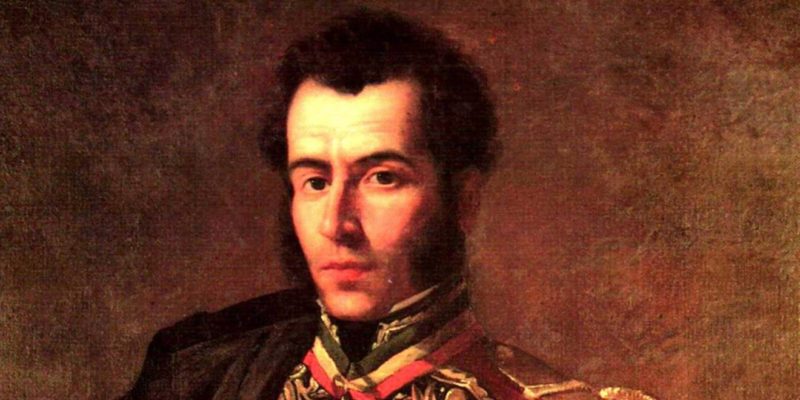
The Chiripa and Wankarani cultures were some of the most important in pre-Columbian Bolivia, whose vestiges date back to 1200 BC. Later others appeared, such as the Tiwanaku, the Aimara or to a lesser extent the Uru, Colla, Lupaca and Pacajes.
All were, later, confronted by the great Inca Empire and, finally, subdued by the Spanish Empire in the 15th century, at the beginning of the conquest and colonization.
The Hispanic colony in Bolivia was predominantly mining and extractive . The region was called the Real Audiencia de Charcas, and it was very prosperous and densely populated, being part of the Viceroyalty of Peru and then the Viceroyalty of Río de la Plata.
Previous indigenous uprisings by Tupác Amaru and other pro-independence precursors failed before the 19th century, but paved the way for the uprisings in Chuquisaca and La Paz in 1809, the starting point of the Spanish American Wars of Independence.
The dispute for control of the region continued until the victory of the liberator Simón Bolívar's troops from Gran Colombia.
Finally, in 1825, the General Assembly of Deputies of the Provinces of Upper Peru proclaimed the existence of the Republic of Bolívar , in honor of the Venezuelan general, and his lieutenant, the Grand Marshal of Ayacucho Antonio José de Sucre, assumed the first presidency. Shortly after, its name was changed to Bolivia, claiming that "If from Rómulo, Roma, then from Bolívar, Bolivia."
Bolivian currency
The Bolivian currency is known as the Boliviano (Bs) , it has the ISO BOB code and is logically issued by the Central Bank of Bolivia. Its current exchange rate (as of 2017) is 6.96 Bs per dollar and 7.31 Bs per euro.
Patriotic symbols
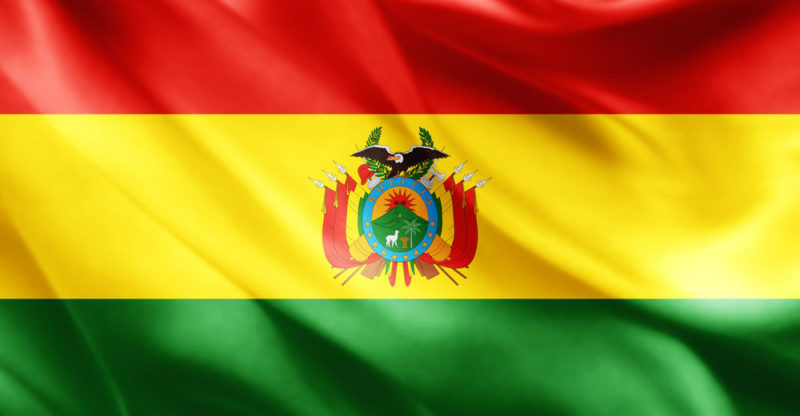
The national symbols of Bolivia are three: flag, shield, and anthem.
- The Bolivian flag. It was adopted in 1851 and consists of three horizontal stripes of red, yellow and green.
- The Bolivian shield. Official national symbol of the Plurinational State of Bolivia, it has undergone a series of historical changes that give the most recent version that of 2004, which shows a rising sun behind Potosí in the upper part, in the center Potosí and Cerro Menor along with a flame, the Chapel of the Sacred Heart of Jesus, a bundle of wheat and a palm tree, in a blue oval with a golden fillet. On each side, national flags, a cannon, two rifles, an ax and the Phrygian cap, finishing off the entire Andean condor in an attitude of taking flight.
- The national anthem of Bolivia. Originally titled "Patriotic Song", it was written with lyrics by José Ignacio de Sanjinés and music by Leopoldo Benedetto Vincenti. It premiered in La Paz, in front of the Government Palace, in 1845 and became official in 1851.
Bolivian economy
The Bolivian economy relies mainly on the extraction of its mineral resources (tin, silver , copper , iron and gold ) and hydrocarbons (natural gas), despite which it is considered a middle-income country, with GDP per capita among the lowest in Latin America.
Also highlighted the secondary sector industries such as beer , milk, oil, cement and textiles. There are also great exponents of the banking or financial sector and national telecommunications companies .
A controversial element of the Bolivian economy is its massive production of coca , traditionally used in infusions or chewed by the population, either for medicinal or religious purposes, but also used illegally to obtain cocaine.
Bolivia Tourism
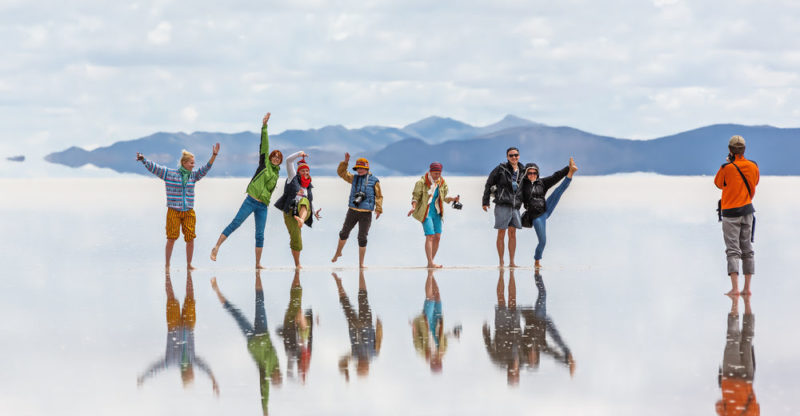
Tourism is an activity on the rise in Bolivia , although it has certain elements against as communications deficient or high levels of terrestrial poverty .
However, tourism chooses the cities of La Paz (46.5%), Santa Cruz de la Sierra (28.3%) and Cochabamba (8%) , which summarizes more than 80% of national tourism.
The Andean region, with its high peaks, as well as regions of archaeological importance or the enormous high-altitude lakes, the Salar de Uyuni (the largest in the world) or the Noel Kempff Mercado National Park, are some of the great favorites of tourism. international, which sees in Bolivia the remnants of a primitive world whose secrets should be recovered.
Bolivian culture
Bolivian culture is mixed, diverse, and complex , endowed with an enormous ethnic variety of more than 40 different groups, which is why indigenous influence is omnipresent in Bolivian culture , even in the one that has greater Spanish or European remnants.
The complex processes of miscegenation and hybridization that took place under the Spanish colony have produced a culture without parallel in the entire world, with abundant places, practices and celebrations considered cultural heritage of humanity by UNESCO and other similar institutions.
Bolivian population
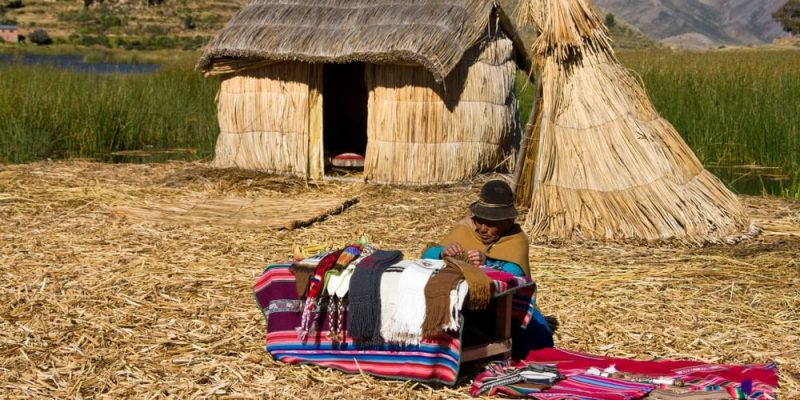
Bolivia has around 10,293,000 inhabitants , 64% live in urban areas and the remaining 36% in the mountains or rural plains.
Most of the population is concentrated in the departments of Santa Cruz, Cochabamba and La Paz , where almost 70% of the inhabitants of Bolivia live. According to the most recent censuses, it is a young population with a constant annual growth rate of 2.74%.
Approximately 1.6 million Bolivians have emigrated to other nations in search of better life opportunities, and their first destinations are Argentina, Chile, Spain and the United States.
Geography of Bolivia
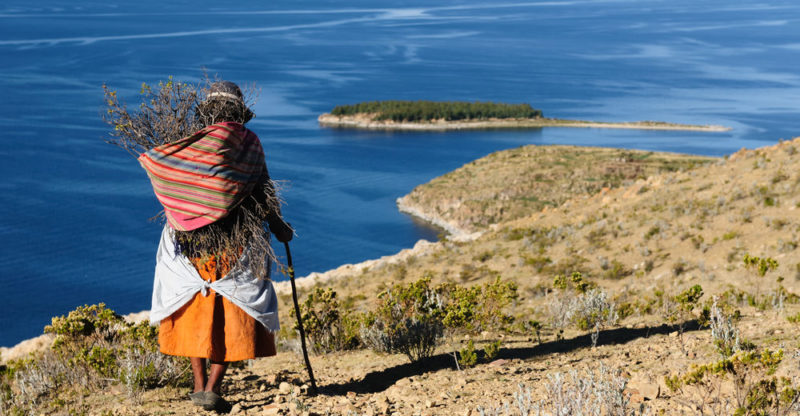
The Bolivian territory includes the Central Andes, part of the Chaco and part of the Amazon . Between these three axes, a huge variety of reliefs and ecoregions unfolds : the altiplano, the Amazon plain, the dry valleys, the Yungas and the Chiquitanian mountains. Bolivia, however, lacks maritime coasts, as a consequence of the War of the Pacific (1879-1883).
The Bolivian territory includes the basins of important rivers , such as the Amazon or the Río de la Plata , as well as the lake basin of the great high-altitude lakes , such as Titicaca or Poopó.
The climate Bolivian, finally, varies greatly from one ecoregion to another, ranging from polar climates (at higher elevations), tropical moist, semi and temperate .
Form of government in Bolivia
The Bolivian country is constituted as a Social Unitary State of democratic Law , governed by a presidential system. Its denomination of plurinational is due to the presence in its territory of multiple indigenous ethnic groups, ranging from Aymara, Quechuas, Yuracares, Ayoreos, and a huge etcetera.
Bolivian democracy is exercised in three different ways , according to its 2009 constitution: participatory (through referendums, assemblies, councils and prior consultations), representative (legislation elected by secret , direct and universal vote ) and community (representatives of the various indigenous peasant communities ).
The above content published at Collaborative Research Group is for informational and educational purposes only and has been developed by referring to reliable sources and recommendations from technology experts. We do not have any contact with official entities nor do we intend to replace the information that they emit.
Veronica is a culture reporter at Collaborative Research Group, where she writes about food, fitness, weird stuff on the internet, and, well, just about anything else. She has also covered technology news and has a penchant for smartphone stories. .
Leave a reply
Your email address will not be published. Required fields are marked *Recent post

Sport: What Is It, Types, Risks, Features, Characteristics and Examples

Dogs: Emergence, Features, Characteristics, Feeding and Breeds

Story: Definition, Elements, Structure, Features and Characteristics

